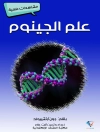This book reviews the most recent developments in the field of osteochondral tissue engineering (OCTE) and presents challenges and strategies being developed that face not only bone and cartilage regeneration, but also establish osteochondral interface formation in order to translate it into a clinical setting. Topics include nanotechnology approaches and biomaterials advances in osteochondral engineering, advanced processing methodology, as well as scaffolding and surface engineering strategies in OCTE. Hydrogel systems for osteochondral applications are also detailed thoroughly. Osteochondral Tissue Engineering: Nanotechnology, Scaffolding-Related Developments and Translation is an ideal book for biomedical engineering students and a wide range of established researchers and professionals working in the orthopedic field.
Tabela de Conteúdo
Part I: Biomaterials advances in Osteochondral Tissue.- Natural Origin Materials for Osteochondral Tissue Engineering.- Synthetic Materials for Osteochondral Tissue Engineering.- Bioceramics for Osteochondral Tissue Engineering and Regeneration.- Part II: Nanotechnology approaches for Osteochondral Tissue Engineering.- Nanomaterials/nanocomposites for Osteochondral Tissue.- Nano- and Micro-Fibers for Osteochondral Tissue Engineering.- Micro/Nano Scaffolds for Osteochondral Tissue Engineering.- Part III: Osteochondral Tissue Scaffolding.- Mimetic Hierarchical Approaches for Osteochondral Tissue Engineering.- Porous scaffolds for regeneration of cartilage, bone and osteochondral tissue.- Layered Scaffolds for Osteochondral Tissue Engineering.- Part IV: Advanced Processing Methodology.- Preparation of polymeric and composite scaffolds by 3D Bioprinting.- The Use of Electrospinning Technique on Osteo Chondral Tissue Engineering.- Supercritical Fluid Technology as a Tool to Prepare Gradient Multifunctional Architectures towards Regeneration of Osteochondral Injuries.- Part V: Hydrogels Systems for Osteochondral Tissue Applications.- Gellan Gum-based Hydrogels for Osteochondral Repair.- Silk Fibroin-Based Hydrogels and Scaffolds for Osteochondral Repair and Regeneration.- In Situ Crosslinkable Polymer Systems and Composites for Osteochondral Regeneration.- Part VI: Translation of Osteochondral Tissue Products.- Stem Cells in Osteochondral Tissue Engineering.- Osteochondral Tissue Engineering: Translational Research and Turning Research into Products.- Clinical trials and Management of Osteochondral Lesions.- Commercial Products for Osteochondral Tissue Repair and Regeneration.- Index.
Sobre o autor
Dr. Joaquim Miguel Oliveira, BSc, Ph D is a senior researcher “Investigador FCT 2012 and FCT 2015”, at the Portuguese Government Associate Laboratory ICVS/3B´s, University of Minho. Currently, he is a volunteer lecturer at the Faculty of Medicine, U. Porto and Dept. of Polymer Eng., UM. Since 2001, he has been involved in the development of biomaterials from natural origin for tissue engineering and regenerative medicine. His research activities have been increasingly focused on nanomedicine, stem cells and 3D in vitro models of disease.
Dr. Sandra Pina, Ms C, Ph D, is an assistant researcher at the Portuguese Government Associate Laboratory ICVS/3B’s, University of Minho. Her research interests include bioresorbable calcium phosphate-based nanomaterials and ionic incorporated calcium phosphates nanocomposites for internal fracture fixation in traumatology, cranio-maxillofacial, spine and orthopaedic surgery.
Prof. Rui L. Reis, Ph D, DSc, Hon. Causa MD (UGranada) is the Vice-Rector for R&D, Director of the 3B’s Research Group and of the ICVS/3B´s, of UMinho – Portugal. He is the CEO of the European Institute of Excellence on TERM, and the President-elect of Global TERMIS (Tissue Engineering & Regenerative Medicine International Society) and the editor-in-chief of the JTERM.
Prof. Julio San Roman, Ph D, is director of Instituto de Ciencia y Tecnología de Polímeros CSIC. His scientific activities are centred in the study and development of polymer systems for biomedical applications, and specifically in tissue engineering, polymer drugs and drug delivery systems.










